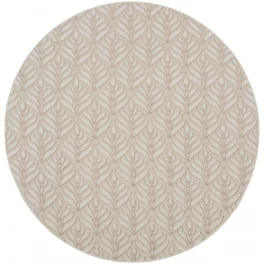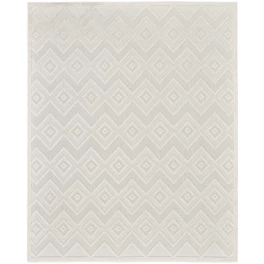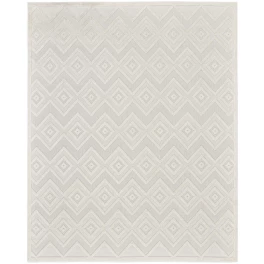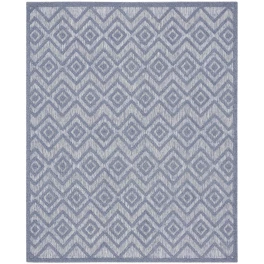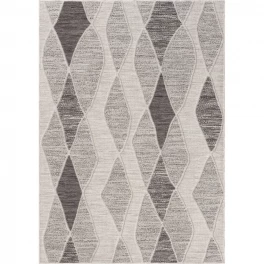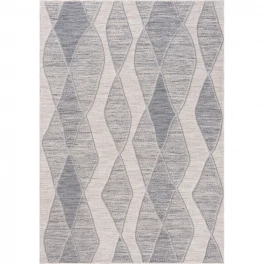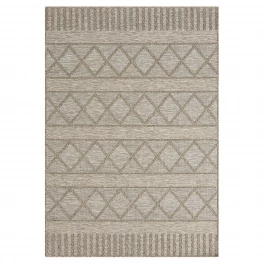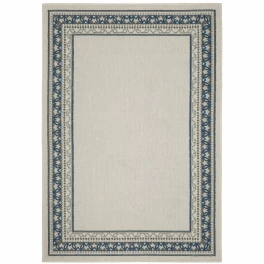The central vacuum systems are envied throughout the neighborhood because it is the most convenient appliance for a dirty home. Through a hidden 2-inch pipe, the central vacuum system uses a hose to suck in dirt from different crevices in your home. The dust and dirt molecules all lead into a 12-gallon canister, conveniently in your basement.
You may be asking yourself, “Why would I need a central vacuum system when I have a conventional vacuum at my disposal?” This is generally the question that most, if not all, homeowners ask themselves. The thought process into why they should install a vacuum is because of the pragmatism behind all whole house vacuum systems.
Imagine vacuuming your home with a regular vacuum. You suck up all the dust and the dirt but for some stingy reason, there’s still an army of dust bunnies and dirt clumps to eradicate. The standard vacuum cleaner, unfortunately, somewhat “filters” your home. After it sucks up everything you want gone, the air just recycles everything you thought you cleaned and takes all the allergens inside, then exhausts them out.
The larger downside to retail vacuum cleaners is how often you have to clean the entire system out. Older, retired homeowners have complained about how portable vacuum cleaners need to be hauled from the first floor to the upper floors of their homes. With a central vacuum system, the only thing you’d have to worry about is the hose and where to connect the hose.
Table of Contents
Central Vacuum Installation Cost
The installation of a central vacuum system in a new home will generally cost less than if you were to retrofit the system in your existing home. For a professional to install the system in your newly purchased home, there won’t be any walls getting in the way of the installation process, which means you can get around pesky pipes and wicked wiring.
An installation of this proportion requires many different decisions to be made. You need to understand the kinds of hoses, inlets, filters, and motors you’ll need to install. When installing a central vacuum system in your home, you need to understand what kind of installation is available for you.
From professionals, you’ll probably receive two kinds of estimates for two kinds of jobs. If you wish for a central vacuum system installed with separate hose attachments or with retractable hose attachments, the prices will vary. This also all depends on how many inlets you want installed into which rooms on which floor. It’s a lot to consider, considering the fact that you haven’t even begun the construction of your new home yet, right?
| Minimum Range per sq ft | $0.67-$0.93 |
| Maximum Range per sq ft | $1.30-$1.33 |
The average range above does not entail the set price range, however, due to the fact that the size of your house will ultimately exercise the correct factors in mind.
Central Vacuum Retrofitting Cost
Projects related to retrofitting your existing home will have a costly expense involved. This is because the professional you’d hire or the work you’ll end up doing yourself will result in rearranging the layout of your home. The spaces that you’ll need to inspect might require other professionals to handle the work for you.
As discussed in previous articles in House Tipster, we’ve brought up the subject of permits and how they will apply with your overall project costs. A permit is required for your home if major alterations are being made to your property. Again, these prices vary depending on the kinds of hoses you’re looking to add.
| Minimum Range per sq ft | $0.83-$1.03 |
| Maximum Range per sq ft | $1.40-$1.50 |
Costs Applied to the Different Types of Central Vacuum Systems
Other than the decision of installing a central vacuum system in your new home or retrofitting it to your existing home, you have to decide what kind of system needs to be set up. There are two major types to consider.
The choices to choose from are the cyclonic system and the filter system. The cyclonic central vacuum system utilizes a tornado style suction that transfers all of the dust and dirt down to a canister. Lighter molecules are then carried through a motor and ventilates outside from your home.
The central vacuum filter utilizes the benefit of a clean motor. Either employing the vacuum process with a bag or a bagless function, the central vacuum filter, unlike the cyclonic, needs to be changed. Since the vacuum has the filter installed into them, you’ll most likely need to replace it every three months or at least once a year.
| Central Vacuum | Cost Average Range |
| DIY Installation | $500-$1000 |
| New Home Installation | $1200-$2000 |
| Exisiting Home Retrofitting | $1500-$2500 |
Costs to Replace Central Vacuum System Parts
Now that you have a bigger picture into how these two systems need to be installed, according to the different circumstances, we can look at the costs to the replacements of your parts.
Tubes
The tubing for a central vacuum system encompasses its very purpose. This is the primary part that gets the job of cleaning your home done. Average price for tubing will range from $8 to $30. And the cost of buying a tube will rely on the kind of tube you’re looking to place into your system.
The most common tubing that these systems use most are central vacuum tubes. Since the tubing is specifically designed, most experts agree that this tubing should be the standard. However, there are two other kinds of pipes that homeowners should educate themselves with.
PVC Pipe
What makes the PVC pipes different from the central vacuum tubing? Mainly, the PVC pipes are made to be softer and more flexible. It also has many added advantages. Vinyl tubing is easy to purchase from local hardware or plumbing stores, it’s affordable, it’s light in weight, it’s easy to replace or install, and it’s harder to corrode. The biggest advantage is how large the tubing is with its diameter, lessening the chances of encountering any blockage.
The disadvantage of installing PVC into your central vacuum system is how dirt and muck can be caught by the edged shaping of your pipes. Since originally, the PVC was meant for water flow and wasn’t meant for air flow, trapping dust and dirt is the main downside to installing these kinds of tubes.
Flexible Pipe
What differentiates the other two types of pipes to the flexible pipes is the need for joints. Since flexible pipes are designed for flexibility, the pipes bend and erase the need to use joints with your installation. But the downside is that the designation of these pipes bend backward, forward and side-to-side, the air flow is expectedly congested.
Outlets
Once the pipes and the tubing are installed, you need to think about the cost to the outlets. The central vacuum outlet is a door or a port that connects the hose into your vacuum system. The average price range of your outlet will probably be between $10 to $25. Even though the selection in the sizes for a receptacle can be vast, the purpose of an inlet will always remain the same.
Placement of Outlets Throughout Your Home
How big or how small is your home? Depending on the size, the installation plans can greatly differ. By figuring out the floor layout, you’ll have a clearer view of how your home’s outlets, inlets, and units should be placed accordingly.
Attachments
Options with vacuum cleaning attachments for your central vacuum system can all cost in many different ways. At an average range, your attachments will cost you anywhere from $10 to $100. Common attachments include a dusting brush, floor brush, crevice tool, and rug and floor combo tool.
For effective methods into cleaning your home with the right attachment, research what kinds of attachments have whichever functions that work best for your vacuuming needs. If you were to tidy up the tight spaces in between your furniture and your wall, a floor brush isn’t what you’d attach.
Hoses
There are two main hoses to consider when purchasing this attachment. You can choose to buy a detachable hose or a retractable hose, depending on the installation you’re planning to execute. On average, the range for this attachment will consist of spending $50 to $250. Some retailers will have 35-foot hoses available for homeowners to purchase but the standard hose is measured to be 30-feet in length. Keep in mind that the measurement of this kind of attachment will be dependent on the size of your household and the size of your home’s flooring.
Power Brushes
There are two methods into powering your brush, either by suction or by electricity. The power brushes that are powered by electricity use motors that spin the brush. Through the assistance of a motor on its head, the brush can suction the tougher surfaces. Brushes powered by air use turbines to force the spin. These kinds of power brushes are best suited for hard floors and short carpers. Average estimates for any kind of power brush you’re looking for will range from $100 to $500.
Power Units
A central vacuum system runs on power units and typically, this is the part that will require the majority of your expenses. Ranging between $200 to $2000, the power unit acts as the required energy source for this utility. There is an assortment of differences in the kind of power unit you might be interested in, and the differences are arranged by how much wattage the power unit offers, its size and how much power it can transmit. The lifespan of a standard power unit will last about 10 years and so will its standard warranty.
Labor Costs to Installing Central Vacuum System
Contacting a laborer to come into your home and installing the central vacuum system will, on average, cost you about $400 to $1500. If you add that up with the materials listed above, the total cost of the project will most likely be around $800 to $3500.
Value of Home Resale After Installation
If you’re thinking about selling the home you put all that work into, installing a central vacuum system actually increases the value of your home by approximately $2000. Depending on the size of your house and what kind of installation or retrofitting you’re planning, there’s a big chance you’ll end up calculating the ROI.
DIY Central Vacuum Installation or Retrofitting
Contrary to belief, the installation of your central vacuum system can be easily performed. Although you can hire a professional to finish up the installation for you, there isn’t much expertise that homeowners would need to complete the job themselves. As mentioned above, a DIY project is much cheaper to execute than the expenses of getting a contractor.
Before all the labor that goes into installing the power unit and the tubing, you need to have the layout plan of your house. Begin by checking the best locations necessary for the inlets. The possibility of air leaks heightens as you plan to install any number of inlets within your home. On average, every home requires one or at least two inlets on each floor. Ensure that the inlets are centrally located. This means that every corner in every room will have the capability of being reached by your vacuum hose.
Within the stories of your home, whether you have a multi-story property or whether you have a crawlspace or a basement, the pipes and tubing can be placed throughout the floors or a few spaces away from the walls. Alternatively, you can place your tubes upwards to your attic. The best installations for your pipes are short, straight, and direct.
This process is for homeowners who need joints on the ends of their pipes. For whichever tubes you decide to purchase, you’ll need to cut and assemble them in a way that the process of suction works best. Now that we have a better understanding of how the central vacuum system is going to be installed, it’s time to do some prep work.
Use a hacksaw or a saw that’s capable of cutting through your pipes. Smooth out the end that you cut with sandpaper and apply a strong adhesive around the end of the pipe. If you’re using PVC pipes, it is highly advised for homeowners to use PVC cement. If there’s a necessity to use joints then push the joint or fitting to the end you applied the adhesive.
Start installing the power unit by mounting it to the wall. Modifications might need to be made if you’re installing the container in the attic. This is due to the gravity and the force of the suction. But locate your first area to work on and use a wall-mounting bracket. Measure up the area for your riser pipe and using a power drill, fit a hole saw to bear down a hole through your wall’s bottom plate and subfloor.
Assemblage is necessary between your elbow and your wall-mounted bracket. Cover it up to protect your parts from swallowing debris. On the underside of your floor, you’ll glue the riser through the intersection between your riser and the horizontal pipe. That will be the location where you’ll run through low-voltage wires from your outlet’s locations. This will be how the wires will connect to your power unit. For additional security, use black electrical tape to completely fasten the wires to the pipes.
The last step involves actually installing the inlet valves. You’ve scanned the layout of your home, you’ve installed your tubes and power unit throughout the spaces, and you’ve worked your wires around the necessary locations. Your last concern is to cut up the holes to place the inlets now. As you’ve now figured out the innards of your home, you should have the knowledge where to mark the positions of where your inlet valves will go.
Put on your safety glasses because this is the part of the process where you’ll need to keep your eyes away from harm. Measure the height of your valves similarly to the height of your electrical outlets. Use your valve to correctly mark the hole you’re going to cut out. By usage of a keyhole saw or wallboard saw, cut out the hole and directly drill a ⅛ inch diameter hole through the floor right in front of the inlet hole. Go to the floor right below the floor you drilled a hole in and run a wire through it.
The wire you ran through will act as your reference point as you place the tubes in the right position through the inlet section of your wall. Level the bracket and valve and assemble them together using the wall mounts. Repeat this process throughout the other rooms you’ll be using the vacuum.
Additional Electrical Wiring Costs for Central Vacuum System
You can pay a contractor to help you install the central vacuum system but there may be electrical work involved in this project. Depending on what your circumstances are, you might expect to call an electrician to come down and help you with additional wiring. The section above shows how simple the job is but reworking the wiring and rearranging them is a whole different story.
In accordance with your specifications, how many inlet ports you want installed, and the size of your home, the average will most likely estimate from $300 to $1300. Maintenance is regularly checked every six months and only requires minimal service.
Hiring a Professional or Professionals Through House Tipster
Now that you have all the information on the costs of installing your central vacuum system, you should find a professional who can help you with installing it. Although you could probably install one yourself, it can be quite a tedious task to fulfill. And within your extensive notes and research, you’ll be wondering how you can find the perfect professional for the job.
As stated above, all that labor that stacks along with a DIY, think about the professionals located in your area! Check out House Tipster, and find the perfect professional for your home repair needs. How much does a central vacuum system cost? Find out from professionals near you!
Featured Image By Torsteinsaltvedt from Flickr




